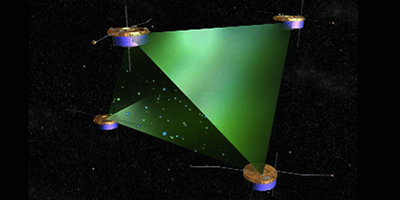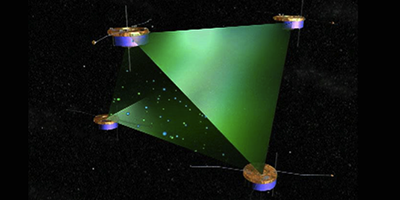Asymmetric Reconnections
When two domains of a magnetized plasma meet, magnetic field lines can snap and reconnect, changing the magnetic topology and thereby releasing energy. Researchers believe that such “magnetic reconnection” partly powers solar flares and can cause failures of plasma confinement in tokamaks. It is also one of the causes of auroras in the Earth’s magnetosphere.
If the colliding magnetic plasmas have the same temperature, density, and magnetic field strength, such reconnection is symmetric, and it is understood for the most part. But when the plasmas have dissimilar properties, as in regions of the magnetosphere that deflect the solar wind, reconnection is asymmetric, and the mechanisms involved in energy transfer are much less well known. In Physical Review Letters, Daniel Graham of the Swedish Institute of Space Physics and colleagues report observational data that give a detailed picture of how asymmetric reconnection works.
The authors used data from the Cluster II mission, a set of four satellites orbiting the Earth in a tetrahedral formation. As the spacecraft crossed the magnetopause (the boundary between the planetary magnetic field and the solar wind), onboard instruments collected magnetic field and electron data in the plasma. An abrupt reversal in magnetic field direction indicated when the instruments were passing through the reconnection region, and the electron data gave clues on the energy exchange mechanisms. The data provided the evidence of reconnection and revealed some of its key features. In particular, most of the action happens where electrons from the magnetosphere are trapped along the magnetic field lines, where they are accelerated by the electric field. The results should help researchers produce better models of asymmetric reconnection and particle heating in the magnetosphere. – David Voss





